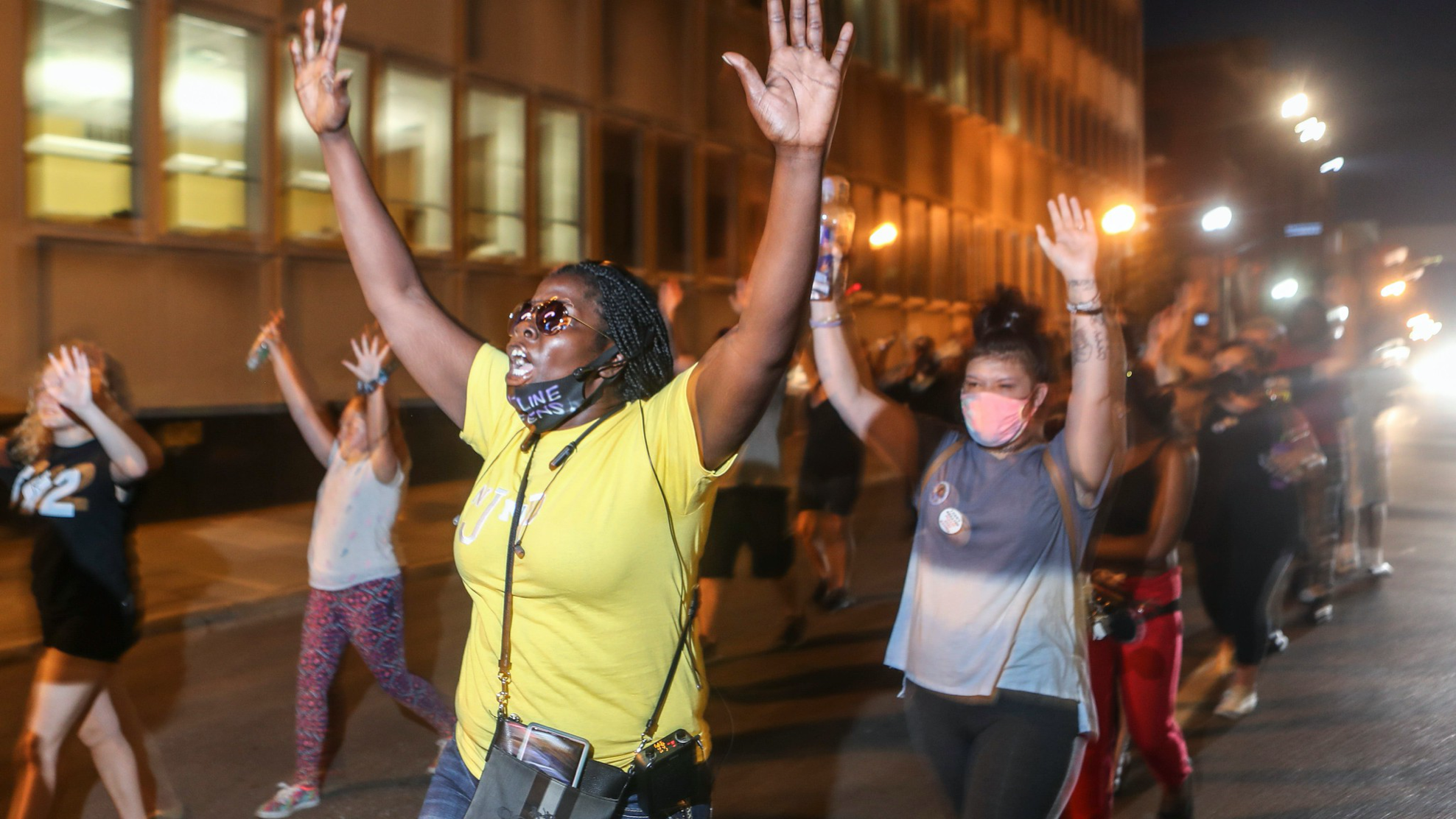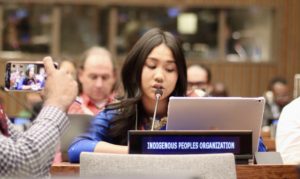CHICAGO – Hours after a 14-year-old boy was fatally shot, dozens of young people held a mile-long “love march” through the city’s South Side Englewood neighborhood last Saturday, holding images of people lost to gun violence and calling for investments in grocery stores, schools and health services in their neighborhoods.
“I’ve lost 34 friends to gun violence and police brutality, and it pushes me to keep going and show love,” said resident Juanita Tennyson, 23, who has hosted three of these marches and a series of food drives since George Floyd’s killing on Memorial Day. “People think protests are bad and violent, and they’re not. They can be beautiful and peaceful and calm.”
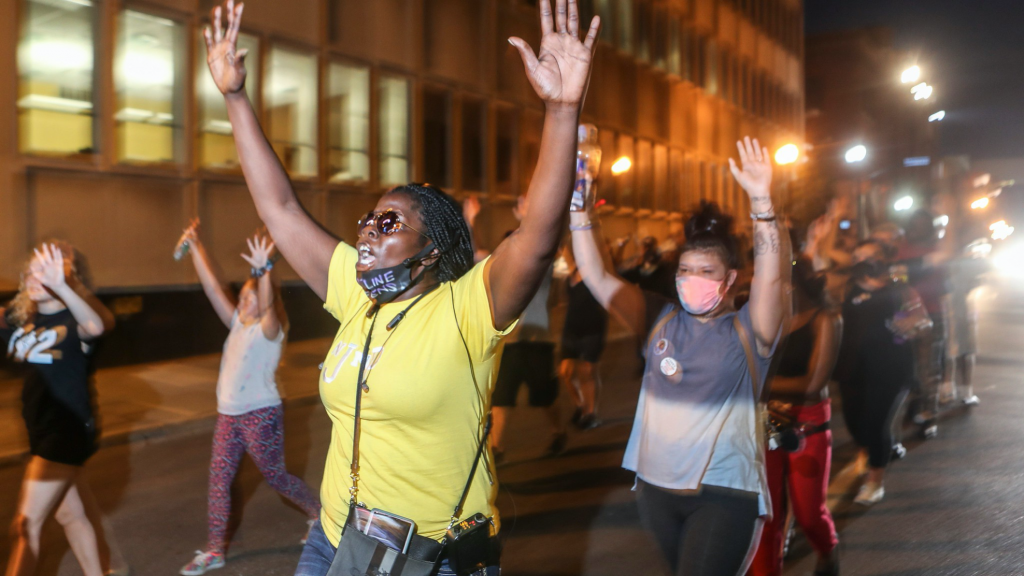
With less than two weeks from Election Day, President Donald Trump and his supporters continue to warn voters that big cities run by Democrats are “going to hell” due to violence associated with Black Lives Matter protests that erupted nationwide this summer in the wake of a series of police killings of Black Americans.

Roughly two-thirds of Americans say they believe protesters and counterprotesters are overwhelming American cities, according to a recent USA TODAY/Ipsos poll.
But the people who live and work in those cities say the president is either terribly misinformed or lying. While murders and shootings have soared in cities across the country amid the coronavirus pandemic and its economic fallout, the vast majority of demonstrations associated with the Black Lives Matter movement have been nonviolent.
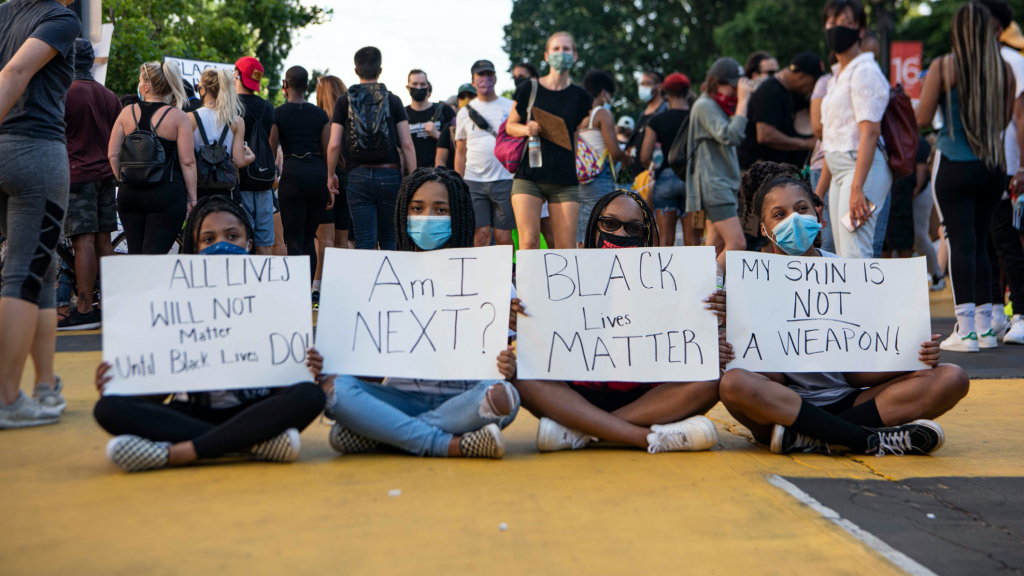
Demonstrators did not engage in violence or destructive activity in more than 93% of the more than 7,750 demonstrations across thousands of locations in all 50 states and Washington, D.C., between May 26 and late August, according to a report by the U.S. Crisis Monitor, a joint effort including Princeton University that collects and analyzes real-time data on demonstrations and political violence in the U.S.
To be sure, demonstrations were violent or destructive in about 220 locations, instigated by protesters, counterprotesters, police and other armed people, the report said. People from those groups, as well as bystanders and journalists, have been injured and killed, and buildings, vehicles and more have been damaged.
Very few of those charged in protest-related arrests appear to be affiliated with highly organized extremist groups, and many are young suburban adults from the very neighborhoods Trump vows to protect from violence, according to a review of thousands of pages of court documents by the Associated Press.
So what’s really going on in cities? The USA TODAY Network looked into what’s happening on the ground in Portland, Oregon; Detroit; Milwaukee; Louisville, Kentucky; and Chicago. This is what residents said.
Portland: ‘It’s clearly being done for political aims’
Night after night in Portland, TV stations broadcast striking images of thousands of people descending upon the federal courthouse, where a small number of protesters repeatedly brushed with police in chaotic clashes where fireworks and flaming bags of trash launched at cops were met with salvos of tear gas grenades and a hail of pepper balls.
But five-year Portland resident Greg Sutliff said most people are now going about their daily lives unaffected by the protests, which have largely been confined to areas around the police department, federal courthouse and city hall.
“Really it’s just normal life for most of us in Portland,” said Sutliff, 34. “… It’s not tense. The vast majority of the protests have been extremely peaceful. The only significant violence that I’ve witnessed has been enacted by the police and federal law enforcement.”
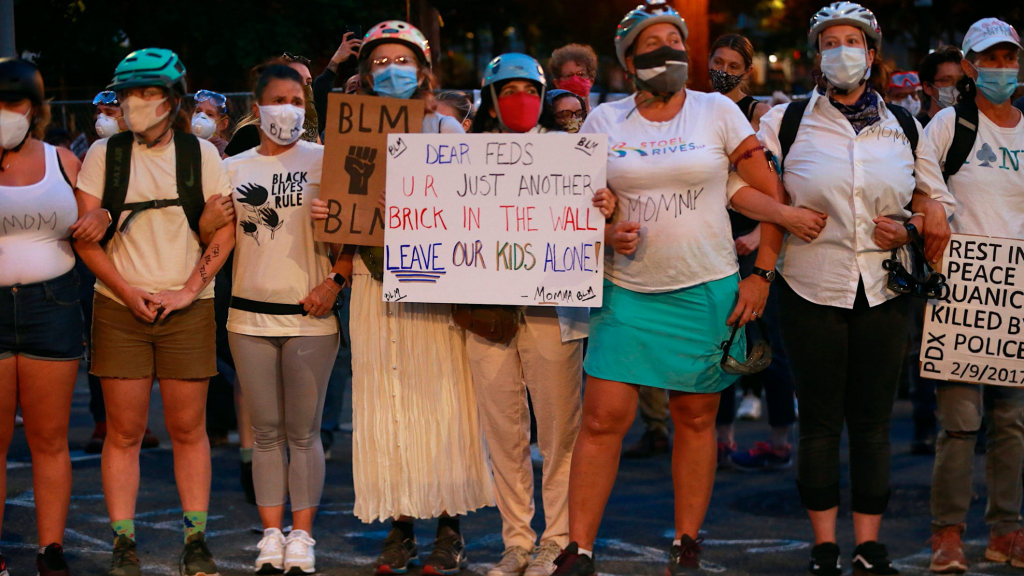
Overall, violent crime against people in Portland is down, and the number of homicides in the past 12 months remains the same compared with the previous period, according to city data. Even the highest daily spikes in violent crime this summer did not exceed the record daily count from 2015 to 2019, according to statistics from the University of Pennsylvania.
But there were 15 homicides in July – more than double the monthly average going back to mid-2015, according to city data. August 2020 was the second-highest month for homicides, according to preliminary data, with seven recorded. At the end of that month, a man was fatally shot in the chest after a pro-Trump caravan of vehicles faced off with counterprotesters. Since 2015, the city has rarely recorded more than three to four homicides in a single month.
Sutliff, who helps run a small nonprofit and has previously lived in Chicago and Milwaukee, rejected the idea Portland is in any way dangerous or violent.
“It’s extremely frustrating that the president has been trying to divide the country into hostile camps and painting an entire city as a place that’s uninhabitable and violent, when that’s not the case,” Sutliff said.
Sarah Iannarone, who is running for mayor in Portland’s nonpartisan election, said she wants partnership from the federal government, not criticism.

Iannarone said Trump masterfully takes accurate but isolated examples of violence, like a flag being burned or a window being smashed, and then spins narrative fitting his political purposes. That, she said, is to be expected from a former reality TV show host.
“He will look for that seed of truth and create a fanciful reality around that. And I believe that’s why his rhetoric resonates with his supporters.”
Still, Iannarone said, the high-profile protests have prompted elected officials across the country to move more quickly toward police reform than they might have otherwise. “You have to give the protests nationwide credit for moving policymakers to move with urgency to address this situation,” she said.
Tourism is a key industry in Portland, where last year visitors spent $5.6 billion, generating $277.8 million in state and local tax revenue, according to Travel Portland, the city’s official destination marketing nonprofit. Overall, Portland’s tourism supports about 37,000 jobs, the group says.
“The president’s comments are unhelpful but I don’t think anyone in Portland listens very carefully to him,” said Jeff Miller, president and CEO of Travel Portland. “… People are incredibly frustrated with the political violence because it’s taking away from the peaceful protest that thousands and thousands of Portland residents are participating in.”
The Portland Police Bureau didn’t respond to requests for comment, and the mayor’s staff said he was unavailable for interviews.
Detroit: ‘That’s what makes moments in history’
Detroiters have also protested since May, but, unlike in many other major U.S. cities, there was no looting or widespread property damage. There were, however, several instances of violence between police and protesters in the early days of the protest movement.
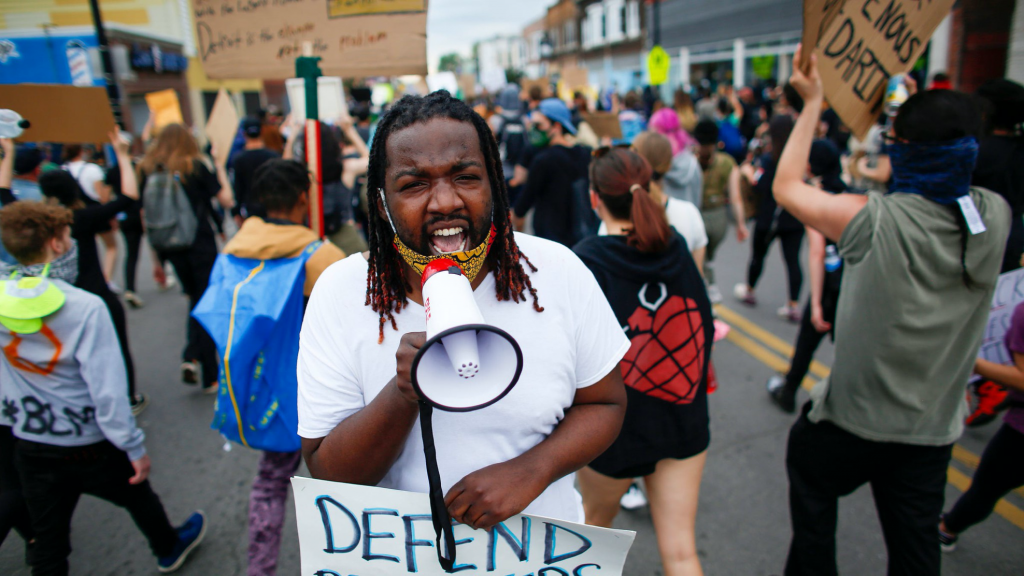
Police arrested hundreds of demonstrators during the first week of protests that began May 29, following Floyd’s death. Protesters said police slammed them to the ground, pushed and shoved them, hit them with batons and fists, shot them with rubber bullets, and neglected them when they needed medical care. A police officer was charged with felony assault after prosecutors say he fired rubber bullets at three journalists in May.
A federal judge in September temporarily banned Detroit police from using batons, shields, gas, rubber bullets, chokeholds or sound cannons against peaceful protesters.
This summer: Protesters berate Detroit police, leaders during public tribunal
Detroit Police Chief James Craig has been highly critical of protesters he categorized as radical. He has highlighted protesters throwing railroad spikes and rocks at police officers, damaging police vehicles, violating curfew and attempting to overtake an intersection.
Detroit Police Department officials declined to comment for this story.
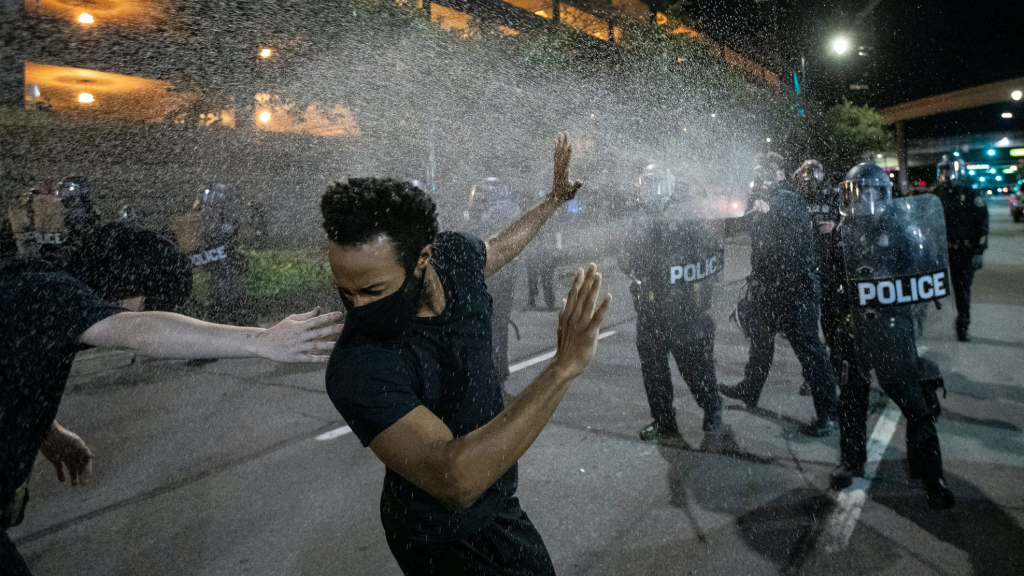
Tristan Taylor, the leader of Detroit Will Breathe, the group orchestrating Detroit’s protests, said he wasn’t surprised that a majority of Americans say they believe protesters and counterprotesters are overwhelming cities. That’s the point, he said – physically stopping society to run business as usual is the power of protest.
“That’s what makes moments in history. I imagine people felt the same way, especially in the South, in the midst of the civil rights movement,” Taylor said. “What it also means is people can’t turn away from the issues that bring people out.”
Although protests in some form continue to be held daily in Detroit, they don’t consistently bring out hundreds like they did in May and June.
Since the first day of protests, violent crime and homicides have risen sharply in Detroit, and several days recorded more violent crimes than the daily record from 2015 to 2019, according to statistics from the University of Pennsylvania. Violent crimes peaked July 5, when the city recorded 72, and again on Aug. 15, with 67.
As of last month, homicides were up 23% from the same time last year and nonfatal shootings were up 50%.
Craig attributed the spike in violent crime to pandemic-related stress, the stay-at-home order and protests.
Meanwhile, the federal government deployed dozens of federal agents in Detroit over the course of the summer as part of Operation Legend, a Trump-administration initiative to battle crime in major U.S. cities.Sixty-two people have been charged with firearms-related offenses and three were charged with other violent crimes under Operation Legend, the Department of Justice said last week.
Milwaukee: ‘The whole purpose is to be a disruption’
Five months after protests began in Milwaukee after Floyd’s death, there is little sign of a city “under siege.”
There have been clashes with police and nights of violence in Milwaukee, especially early on, and more recently in Kenosha and suburban Wauwatosa. But local officials and residents say the protests have been marked more by determination than destruction.
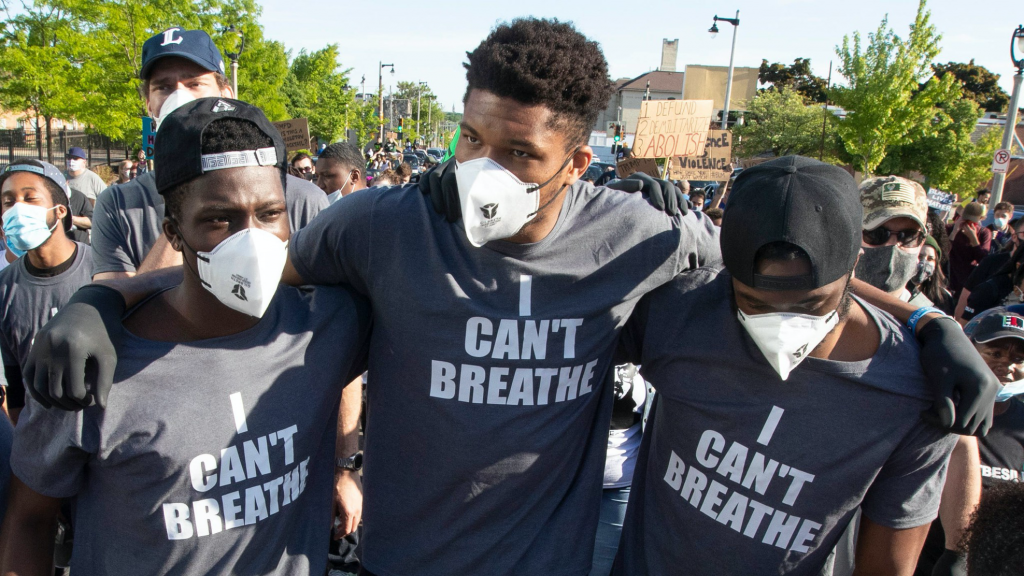
In the first days, thousands of protesters crisscrossed Milwaukee and surrounding suburbs in long, daily marches. Unrest broke out near two police stations late at night as some people looted nearby stores and drove recklessly through the streets, and police used tear gas and pepper spray to break up crowds.
Since then, dedicated protesters formed a group called the Peoples Revolution, which has marched or gathered to strategize every day. The activists have devoted much of their energy to the cases of Alvin Cole, shot and killed in February by a Wauwatosa police officer, and Joel Acevedo, who died after an off-duty Milwaukee officer put him in a chokehold during a fight at the officer’s house in April.
Milwaukee Common Council President Cavalier Johnson said those marching regularly are committed to seeing real change carried out and are “fighting for the founding creed of this nation.” But a small number of others who join late at night and who are unorganized and destructive “turn the tide of the conversation from one that’s positive to one that’s negative.”
Some residents have been critical of the protesters’ tactics, particularly in suburban Wauwatosa. Protesters have shut down Mayfair mall on several occasions. They’ve marched to the Wauwatosa Police Department and the mayor’s home, often late at night. They’ve packed city hall meeting rooms.

“The whole purpose is to be a disruption. Because injustice has been a disruption in the lives of many Black and brown people,” organizer Khalil Coleman said in August.
That month, Joseph Mensah, the officer who shot Cole, said he was assaulted by protesters, and two men are facing felony charges after a shotgun was fired during the encounter. Then in October, local officials coordinated a heavy police response to protests when the Milwaukee County district attorney decided not to charge Mensah in Cole’s death, the third time he was cleared in a shooting death.
Police fired tear gas on crowds on at least three nights, citing an unlawful assembly after curfew, and National Guard members stood outside city buildings.
Sarah Griffie, a member of local activist group Tosa Together, lives in the areas that saw the most activity in Wauwatosa and, now more than week after the intense protests, she says “things have mostly gone quiet.”
“Most of the stores appear back to normal, and the sidewalk chalk has washed away,” Griffie said. “The many Black Lives Matter yard signs remain.”
According to Milwaukee Police Department data, homicides this year are down more than 20% from the same time last year, and other violent crimes are also down by double-digit percentages.
But a count by the Milwaukee Journal Sentinel, part of the USA TODAY Network, shows Milwaukee is on pace for a record homicide year. There had been more than 155 homicides as of Oct. 18, according to the count. The city had 99 homicides in all of 2019.
Milwaukee saw its greatest number of violent crimes, 70, on June 21, with subsequent peaks around the July Fourth holiday and at the end of July, according to statistics from the University of Pennsylvania. But none of the peaks exceeded the highest number of daily violent crime incidents seen between 2015 and 2019, when the city recorded 73 violent crimes in a day.
Twenty-five people have been charged with firearms-related offenses under Operation Legend, and four have been charged with other violent crimes.
In nearby Kenosha, after a police officer shot Joseph Blake in the back at close range in late August, that community became a national focal point, with visits from Trump and Democratic challenger Joe Biden.
Buildings were set on fire and, on a night after a call for armed men to protect businesses, two protesters were shot and killed. Kyle Rittenhouse, 17, of Antioch, Illinois, faces homicide charges.
The most intense clashes took place at the Civic Center Park, outside of the Kenosha County Courthouse in downtown Kenosha and lasted for three days. But protesters have kept marching and organizing in the weeks after the incident.
Kenosha resident Porche Bennett, an Army veteran, has become one of the faces of change in the city. She has met a number of times with Kenosha Mayor John Antaramian and has been added to his task force on police and community relations.
“There’s been more transparency going on,” Bennett said. “I can honestly say, even though it’s sad that it took this to happen, there has been a change.”
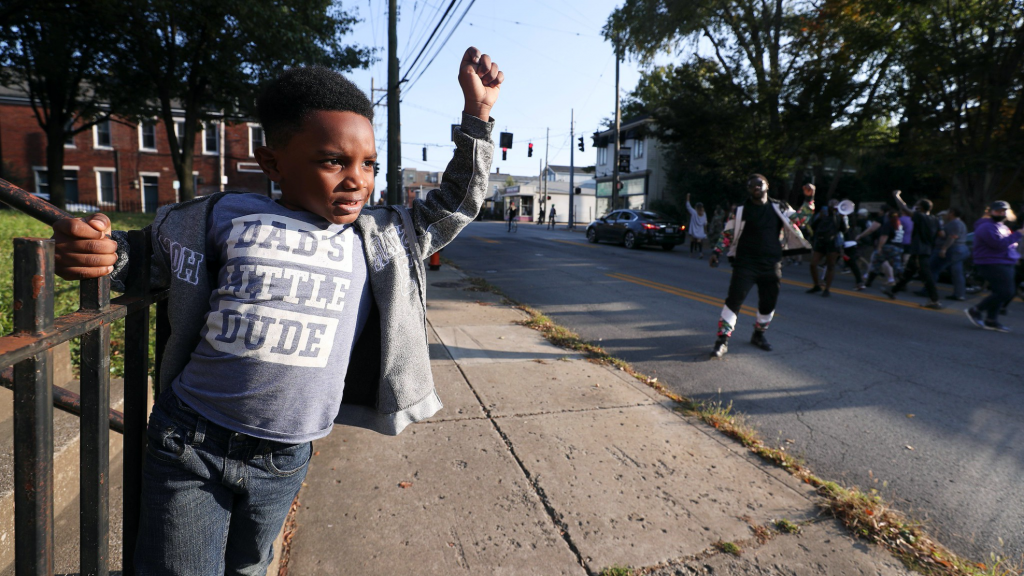
“Besides COVID, most parts of Metro Louisville are functioning as best as it can function under the pandemic,” said well-knowncommunity activist Christopher 2X.
But over the course of more than 140 days, there has been some violence. During the first nights of protests, there was gunfire downtown, and many businesses were looted in the following days. Barbecue chef David McAtee was shot and killed by the National Guard on June 1, and weeks later, freelance photographer Tyler Gerth was shot and killed at a protest event.
Following the Jefferson County grand jury decision Sept. 23 not to charge the officers in Taylor’s death, protests intensified, and a few small fires were lit in trash cans and on a board attached to the city’s courthouse. That evening, two police officers were shot.
‘She didn’t deserve to die’: Louisville officer involved in Breonna Taylor case speaks out
There have been 887 arrests tied to the protests as of Oct. 15, according to Louisville police, but they typically stem from what organizers call “good trouble.” Demonstrators have blocked bridges to traffic, shut down a city block to host an impromptu block party, and organized a massive sit-in on Attorney General Daniel Cameron’s front lawn.
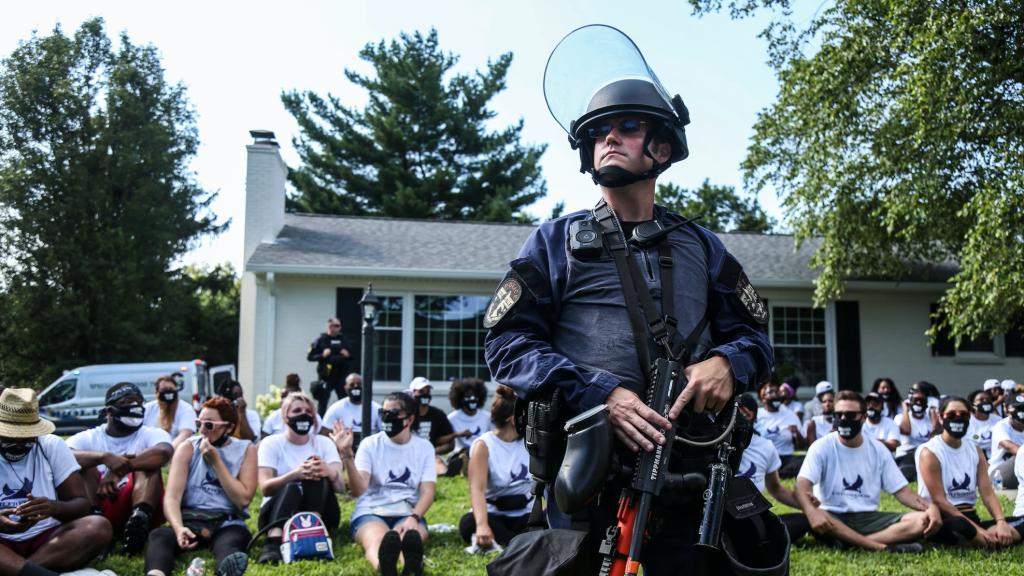
Separately, Louisville has experienced more homicides this year, already, than any year prior. As of Oct. 11, there had been 130 criminal homicides, surpassing the record of 117 from 2016. Violent crime as a whole is up, too. From January to August, there were 4,378 reported instances of violent crime, compared with an average of 3,093 over the past five years.
2X says he sees no evidence that the protest movement is correlated to the increase in homicides. Instead, he calls it a continuation of a trend. From 2012 to 2019, homicides have gradually trended upward, but 2020’s total is still an outlier.
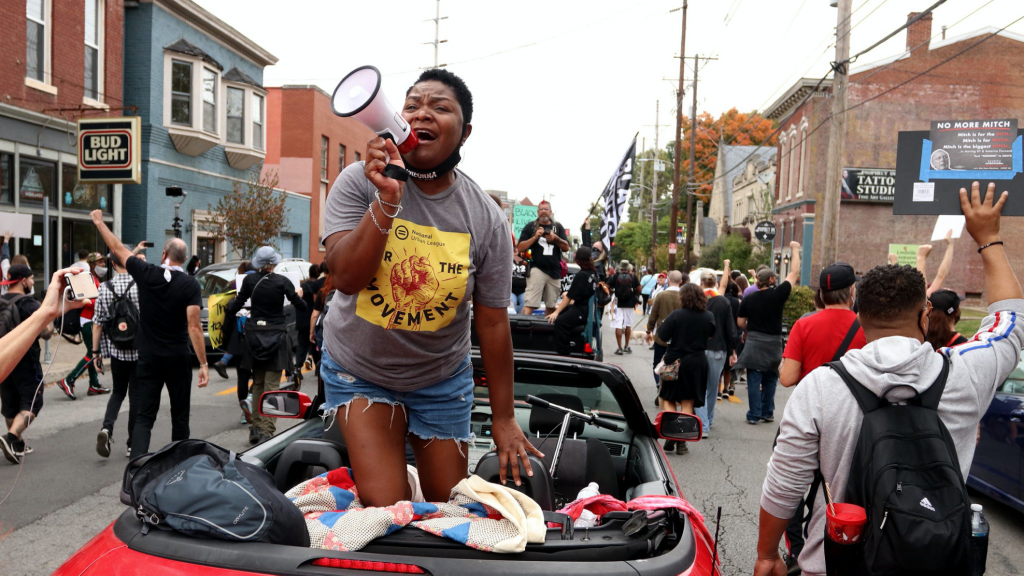
Mayor Greg Fischer said in September that the city had to address the “horrifying increase in homicides that we’re seeing in our city, many of which are connected to the illegal drug trade.”
Other local leaders have pointed to circumstances stemming from the coronavirus pandemic – like joblessness and no in-person school – as contributions to increased violent crime.
Chicago: ‘I don’t believe the protests had anything to do with the looting’
The large majority of demonstrations in Chicago have been peaceful: There have been public dance parties, kids have marched with the city’s Dreadhead Cowboy, and there was a daylong encampment across from a police building, where activists reimagined what community safety would look like without police and gave out food, art and mental health resources.
Dozens of marches, rallies and vigils – largely led by current and former Chicago Public Schools students – have attracted thousands of people. Many of the events resembled a June “Peace Walk,” through the South Side Chatham neighborhood, where hundreds of people from across the city gathered to listen to youth speakers, march and eat lunch. Others took place near various police precincts, where groups of hundreds held moments of silence or sang “Lift Every Voice and Sing.”
At the same time, there was a small percentage of violent and destructive incidents that garnered the bulk of media attention. One event, in July, turned violent after dozens of people who had attended a “Black, Indigenous Solidarity Rally” attempted to topple one of the city’s Christopher Columbus statues. Some people in the crowd threw fireworks, rocks and frozen bottles at officers guarding the statue, and police beat protesters with batons. Twelve people were arrested, 18 officers were injured and at least one protester had her teeth knocked out when an officer punched her.
Police Superintendent David Brown said in late September that officers believed there was a “coordinated effort over the summer to embed agitators in peaceful protests.”
There was also violence associated with two rounds of looting this summer, which took place largely after dark. At the end of May, hundreds of police officers clashed with a group of people who threw rocks and bricks, set fires and looted businesses in the Magnificent Mile shopping district and other parts of the city. There were nearly 200 incidents of violent crime on May 31 – the most in a single day all summer and more than any daily record from 2015 to 2019, according to statistics from the University of Pennsylvania.
More than two months later, 100 people were arrested and 13 officers were injured in another round of looting, and a security guard and a civilian were hospitalized after being shot. About 80 windows and doors were broken that night, Brown said. There were 74 felony arrests, and police recovered five firearms, the department said.

Tennyson, who organized the “love marches,” said she saw the looting as a cry for help. Like many people in her neighborhood, Tennyson, who had been working at a McDonald’s, lost her job when the pandemic hit. After the looting, Tennyson decided that she’d use her free time to fundraise and organize drives to give out free goods, such as snacks, detergent and paper towels.
“A lot of youth are dying because we don’t have resources in our communities,” Tennyson told USA TODAY as she passed out tampons and canned beans on a sidewalk in the city’s South Shore neighborhood, across the street from an empty retail corridor. “Resources weren’t there before, and the looting made it worse.”
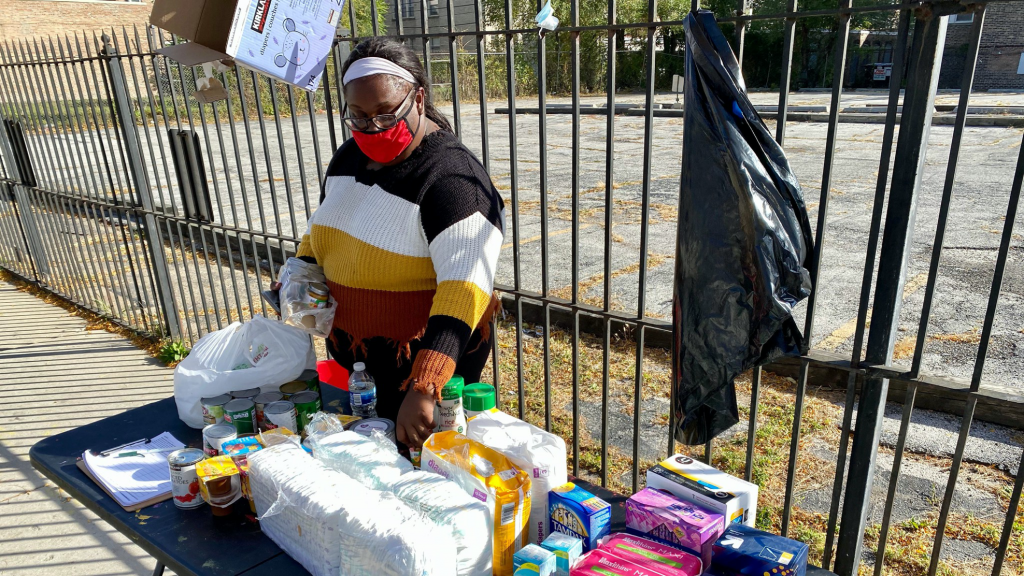
Total crime rates in Chicago are down this year, but murders and shootings soared over the summer as the pandemic has disproportionately ravaged low-income, Black and Latino neighborhoods. Murders in Chicago are up 53% this year from the same time last year, and shootings are up 53%, according to the Chicago Police Department.
Thirty-six people have been charged with firearms-related offenses under Operation Legend, and four have been charged with other violent crimes.
Like Tennyson, Ahriel Fuller, 25, a resident of the South Side Auburn Gresham neighborhood, started running a free supplies drive over the summer, mainly through donations of lightly worn clothing. Fuller said it’s “ironic” that Trump characterizes protests in Chicago as violent.
“People want to say that protesters are violent, but you have to look at the people who are in charge of violent systems,” said Fuller, as she gave a book to a man who passed by her folding table. “Poverty is violence, and we’re responding directly to poverty. This is a protest. It’s my protest.”
Grace Hauck reported from Chicago, Trevor Hughes from Portland, Omar Abdel-Baqui from Detroit, Ricardo Torres from Milwaukee and Hayes Gardner from Louisville.
Contributing: Sophie Carson, Molly Beck and Evan Casey, Milwaukee Journal Sentinel

